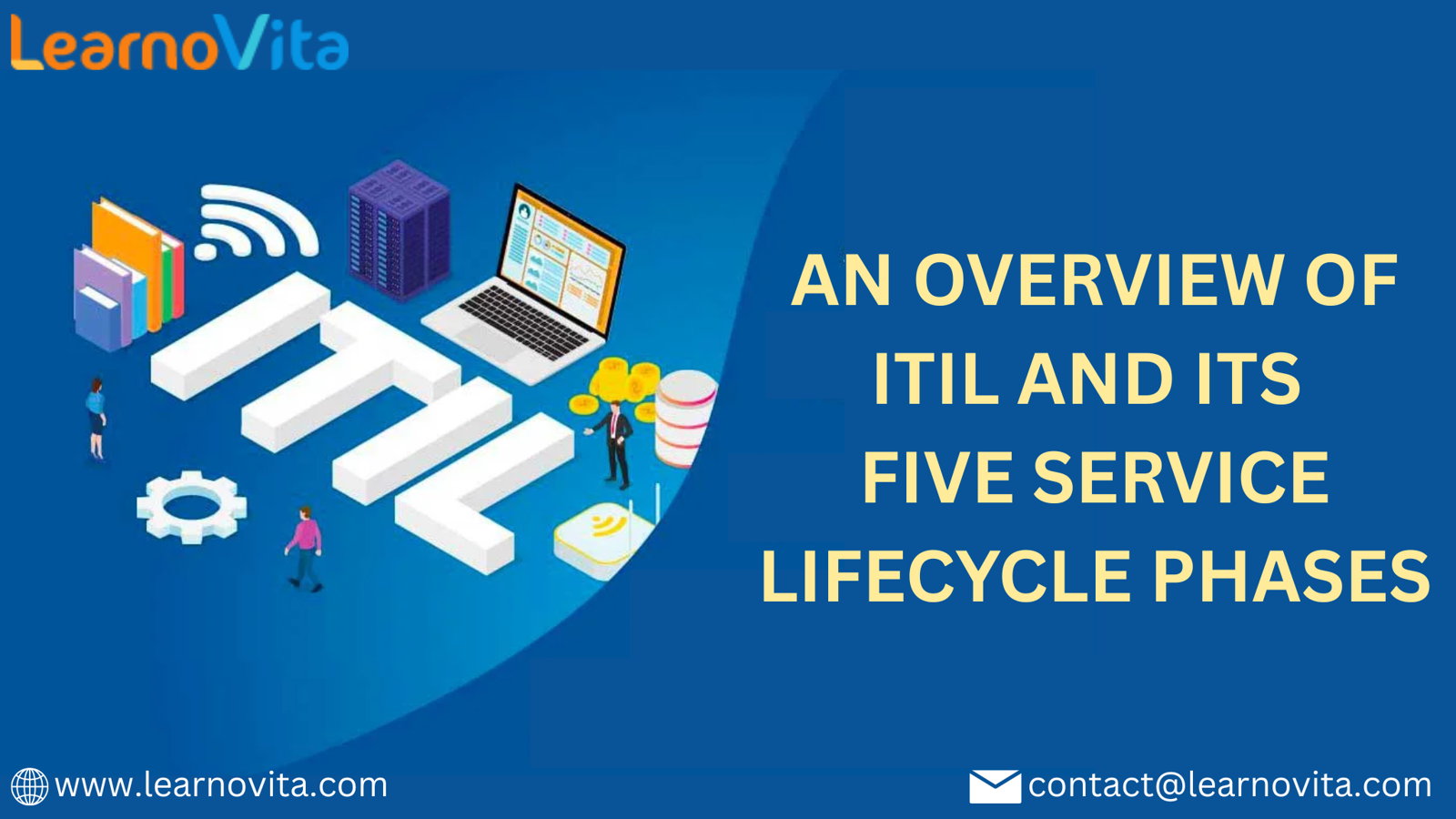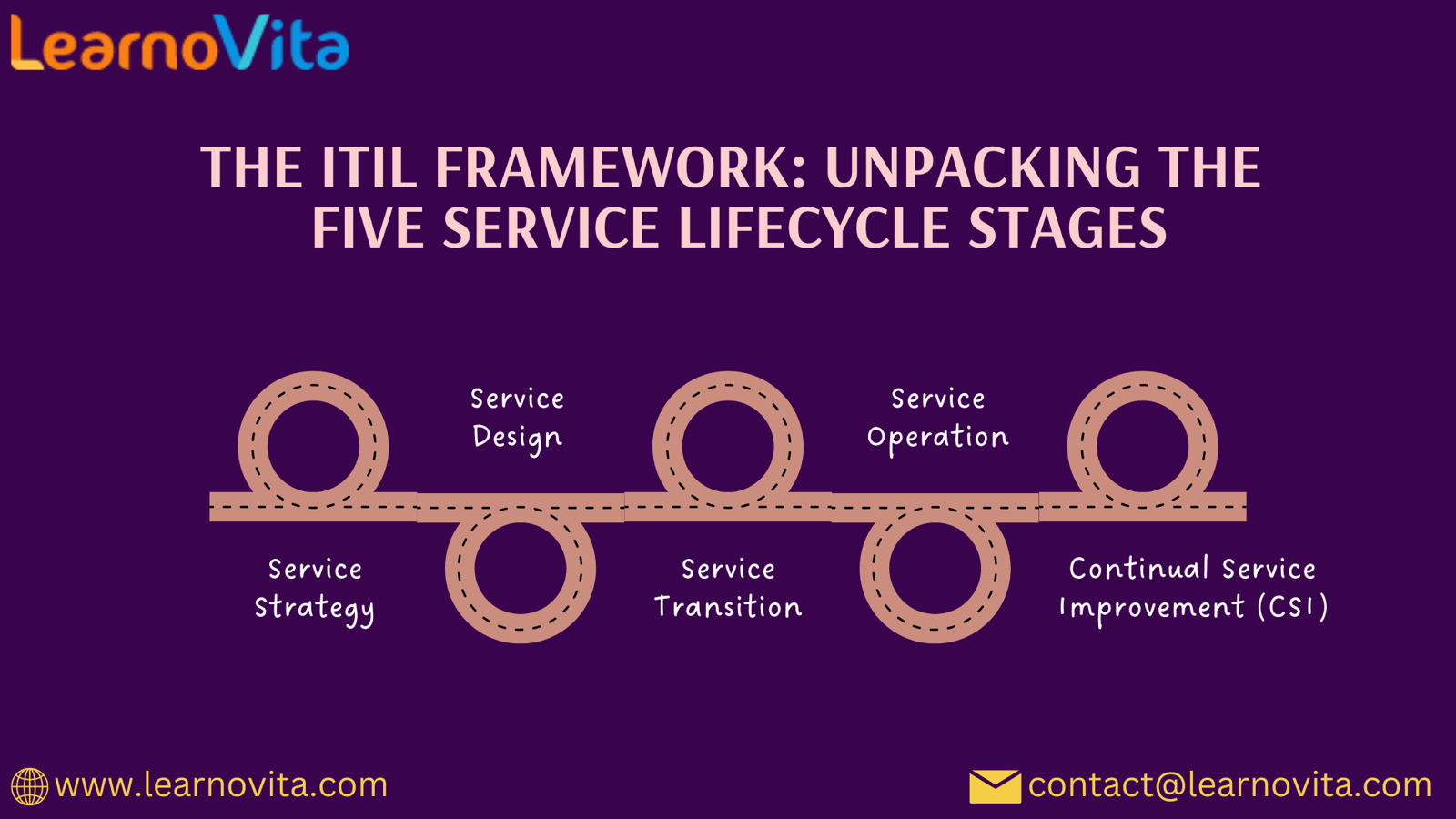An Overview of ITIL and Its Five Service Lifecycle Phases
In the fast-paced world of IT service management, frameworks are essential for ensuring that services are aligned with business needs. One of the most recognized frameworks is the Information Technology Infrastructure Library (ITIL). ITIL provides a structured approach to managing IT services, from conception to delivery, ensuring quality and efficiency.
If you want to excel in this career path, then it is recommended that you upgrade your skills and knowledge regularly with the latest ITIL Certification Course.

What is ITIL?
ITIL is a set of practices for IT service management (ITSM) that focuses on aligning IT services with the needs of the business. The framework is based on a lifecycle approach, which emphasizes the continuous improvement of services. ITIL provides best practices that help organizations manage their IT services effectively, ensuring that they meet customer needs and deliver value.
The Five Stages of the ITIL Service Lifecycle
The ITIL Service Lifecycle consists of five key stages, each with its own processes and objectives:
1. Service Strategy
The Service Strategy stage is all about understanding the organization’s objectives and customer needs. It involves defining how to create value for customers through IT services. Key activities include:
-
Identifying market opportunities.
-
Defining service offerings.
-
Establishing service portfolios.
This stage sets the foundation for all subsequent stages, ensuring that IT services are designed with the business goals in mind.
2. Service Design
In the Service Design stage, the focus shifts to the planning and designing of services. This involves creating specifications for new services, as well as changes to existing ones. Key activities include:
-
Designing service solutions.
-
Developing service management processes.
-
Ensuring that service designs are practical and cost-effective.
Service Design aims to ensure that services are designed to meet the needs identified in the Service Strategy stage, while also being efficient and sustainable.
3. Service Transition
The Service Transition stage focuses on implementing and managing changes to services. This involves planning and coordinating the deployment of new or changed services into the live environment. Key activities include:
-
Developing knowledge management practices.
-
Conducting testing and validation.
-
Managing change and release processes.
The goal of Service Transition is to minimize disruptions while ensuring that new services or updates are delivered smoothly and efficiently.
With the aid of Best Software Training Institute programs, which offer comprehensive training and job placement support to anyone looking to develop their talents, it’s easier to learn this tool and advance your career.

4. Service Operation
Once services are live, the Service Operation stage takes over. This stage is responsible for delivering and supporting services in the production environment. Key activities include:
-
Incident management.
-
Problem management.
-
Request fulfillment.
Service Operation ensures that IT services are delivered effectively, meeting agreed-upon service levels and providing support to users as needed.
5. Continual Service Improvement (CSI)
The final stage, Continual Service Improvement, focuses on ongoing improvement of services and processes. This involves assessing service performance and identifying areas for enhancement. Key activities include:
-
Reviewing and analyzing service metrics.
-
Implementing improvement initiatives.
-
Ensuring that lessons learned are integrated into future service designs.
CSI is crucial for ensuring that IT services evolve with changing business needs and continue to deliver value over time.
Conclusion
ITIL provides a comprehensive framework for managing IT services throughout their lifecycle. By understanding and implementing the five stages of the ITIL Service Lifecycle—Service Strategy, Service Design, Service Transition, Service Operation, and Continual Service Improvement—organizations can enhance service delivery, improve customer satisfaction, and align IT services with business objectives. Embracing ITIL principles can lead to more efficient operations and a stronger focus on delivering value to customers.
- Art
- Causes
- Crafts
- Dance
- Drinks
- Film
- Fitness
- Food
- Jeux
- Gardening
- Health
- Domicile
- Literature
- Music
- Networking
- Autre
- Party
- Religion
- Shopping
- Sports
- Theater
- Wellness



